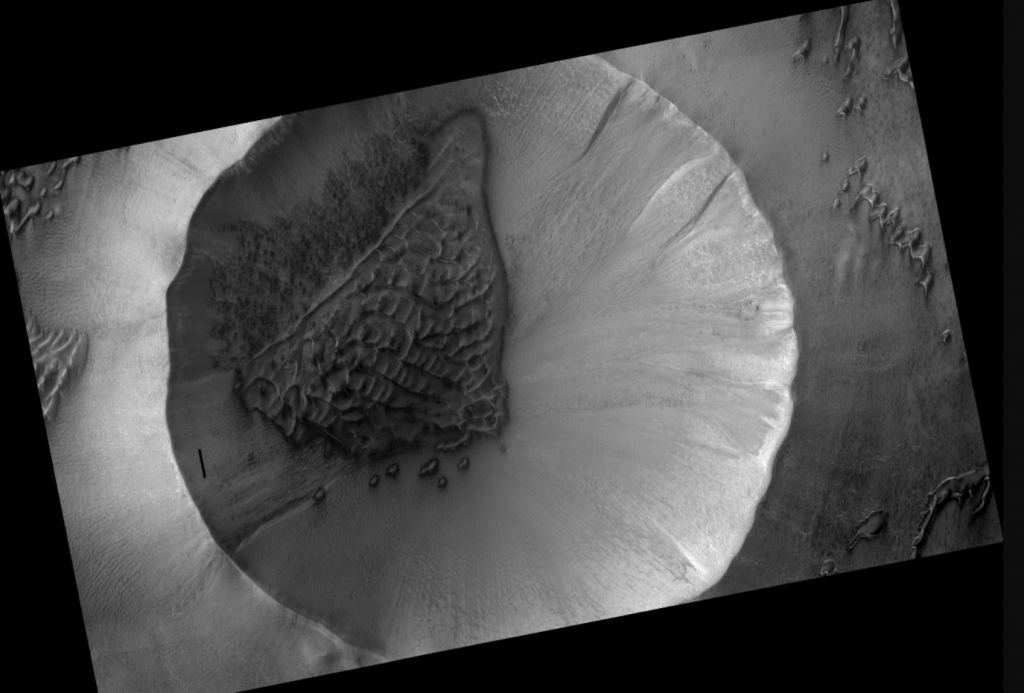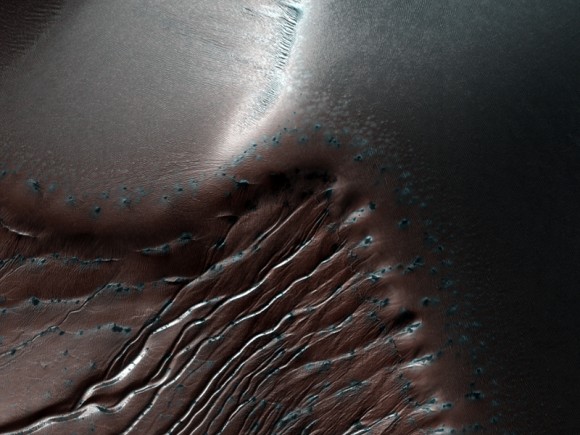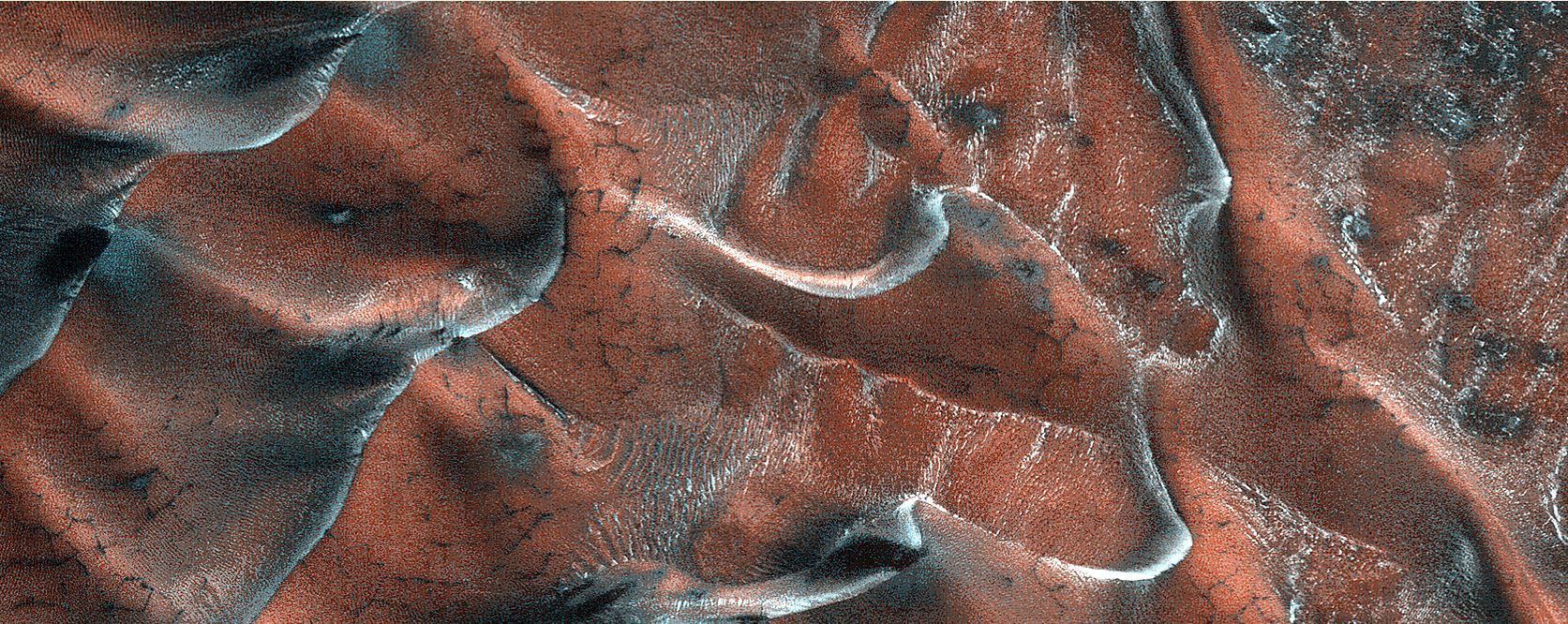Sand dunes on Mars are fascinating. They shift and move in different ways than they do on Earth, and they can grow to much more immense sizes than on our own planet. Several conditions contribute to the gigantic sand dunes and large fields of dunes that can form on the Red Planet, including its low gravity and air pressure.
Seasonal changes affect the Martian sand dunes, as well.
This new image from the Mars Reconnaissance Orbiter’s HiRISE (High Resolution Imaging Science Experiment) camera shows seasonal frost that has formed on a field of dunes inside a crater. In fall and winter, temperatures plunge to a point where CO2 ice forms and creates deposits on the sides of the dunes.
MRO has been orbiting Mars since March of 2006, and over the 15 year lifetime of this mission, scientists have been able to observe seasonal changes on dunes like these. They know that in the Martian spring, those ice deposits will heat up, causing instabilities and outgassing that can change the dunes’ shapes and even create gullies and other features. You can read more about research into that process here.

This field of sand dunes lies inside a 5-kilometer diameter crater in the high-latitudes of the northern plains of Mars. In the larger image, you can see how some dunes have separated from the main field and appear to be climbing up the crater slope along a gully-like form. Other dunes can be seen outside the crater as well.
You can explore a larger version of this picture, as well as see all the spectacular images captured by HiRISE on the instrument’s website.


